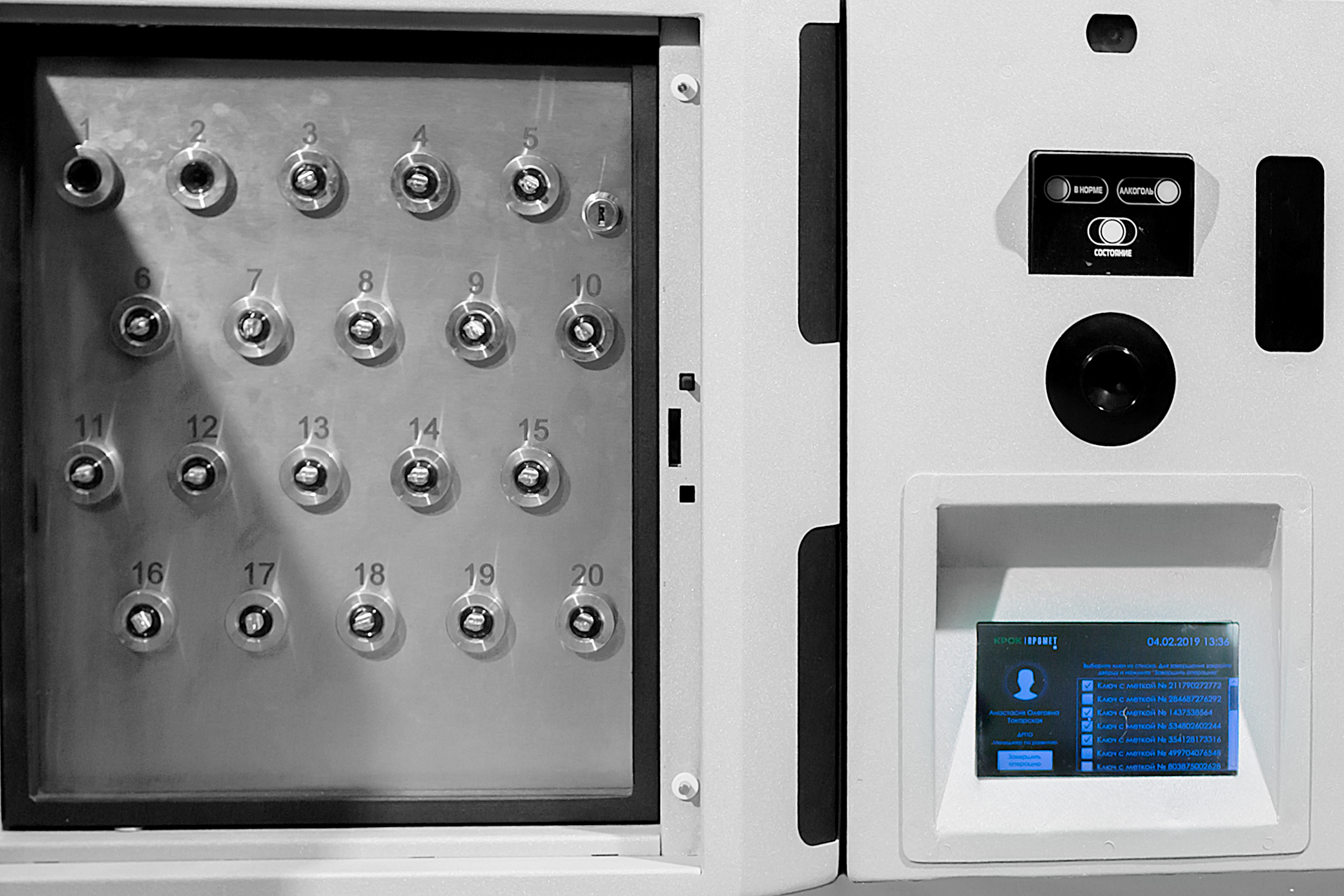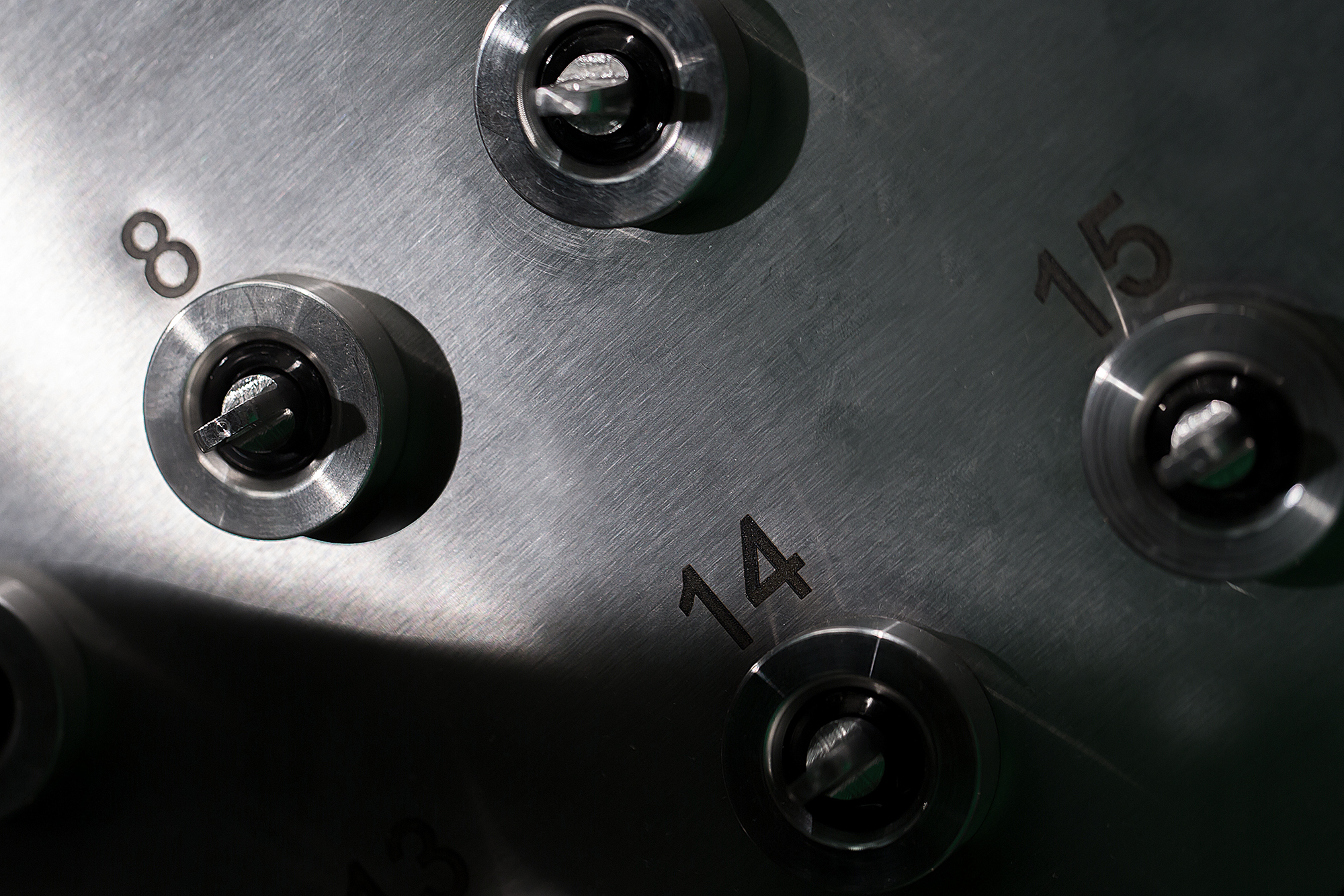Testing a smart housekeeper (vodka, kefir, other people's photos)

We have smart housekeepers who store and give the key to someone who:
- It will be identified by face recognition or by personal RFID card.
- Breathes into the hole and turns out to be sober.
- Has rights to a specific key or keys from a set.
A lot of rumors and misunderstandings have already appeared around them, so I hasten to dispel the main ones with the help of tests. So the most important thing:
- You can fool a breathalyzer with an enema.
- You can crack it with a crowbar and pull out the key with a cable and a car (or wire and the same crowbar).
- It opens after various medications and kefir (intoxication is calculated by the exhaled vapor of alcohol, for example, after tincture of motherwort).
- Yes, it can be used at facilities with power outages, it has a battery and can be locked without power.
And now for the details.

Kms20 with recognition and breath testing module.
How does she work?
You go into the office, smile at the housekeeper and breathe through the hole. Vandal-resistant glass opens, the set of keys available to you is highlighted, you pick it up and go about your business. The rest are locked in slots, it is impossible to take away another key accidentally.

Each key hangs on a steel ring-seal, which is tightly fixed in a steel key ring, which, in turn, is securely fixed in the key holder slot:

The key fob is fixed in the slot, which is equipped with an electric lock mechanism. After identification, the system:
- Opens a common door to the slots, i.e. the whole box.
- Highlights available keys.
- Unlocks available keys.
- Logs employee actions.
- Waiting for the door to close.
- Locks keys and a door.
So that the employee does not take another key (it can be pulled out with the help of an assistant UAZ), the camera takes the actions of the employee inside the box.
Identification is possible by the image of a person, by the employee’s pass, by code or fingerprint. Two options are usually installed: biometrics and direct input, or biometrics and RFID.
After successful identification, you need to go through the breathalyzer module. Usually this is necessary in order to exclude drunk employees from getting to work, as well as to protect the office and production on Friday night. The housekeeper does not open, so you can’t surrender the key while drunk. More precisely, this is the default behavior. It is possible not to do an alcohol test on the delivery of keys, it depends on the requirements of the customer.
Management controller with Ethernet connection (you can remotely edit bugs and assign rights). Power - from a 220 V network, has a built-in battery for autonomous operation, it is locked when the power is turned off. Key rings with RFID tags. Steel anti-vandal housing.
There are key holders both with a common key box, and similar boxes just - it turns out an automatic left-luggage office.
Who is using?
Here is what we met:
- Separation of office rights in banks and large companies: it is convenient to integrate the key logger events with access control systems and fix the moment of taking keys.
- Logging access to the warehouse and fixing exactly who went there and when.
- Admission to industrial premises, electrical switchboards, and so on: no need to carry keys with you, just have a not-so-wrinkled face or pass.
- Minimizing downtime due to "Call Vasya, he took the key." And generally in all situations where tolerances are transferred in shifts. It is not even a matter of obtaining a key by a specific employee, but of the fact that the chief engineer or shift supervisor has an electronic report on his hands: who received the key, when, with which person he did it. And the video recording. It will be possible to do unloading on the delivered-not delivered keys. This greatly simplifies the changeover. At one of the facilities with our installation, half an hour before the event, SMS messages are still sent: “Vasilich, you have half an hour to finish work and turn in the key if you are still alive.”
- The fight against gouging, losing keys (finished - put in place).
Naturally, it is not magic and does not solve all security problems. Here is what this device class can do:
- Recognize that the keys were taken by the very person who was supposed to do this. And shoot the whole process on video.
- Make sure he is sober.
When we saw how an electrician, being in a very shabby state and with a couple of augmentations after the weekend, opened the key keeper with his VKontakte avatar from the phone, we realized that this is the cyberpunk that we deserve. You can really do this: the key keeper does not make the “require attention” setting, like the same iOS-identification on the phone. Repeat - on the test:
After kvass and kefir, it starts up:
After chachi - no (thanks to the testers for their dedication):
If a drunk employee with a sober friend comes up to the housekeeper, a friend can use the drunken body to recognize his face, and then breathe on his own. Or like our already mentioned hacker from the world of electricity - get an enema from your pocket and blow it with a sensor. At diagnostic terminals, we usually protect by recognizing the iris of the eye: you need to breathe when you apply your eyes, that is, you will not be able to make a friend, but the workers have had a pear once.
Everything is simply recorded here on the video, and if the employee violates safety precautions, you will have a video proving that before that he violated the regulations.
The key can be pulled out, as well as the key holder destroyed: despite the anti-vandal performance, little can be done against a person with a crowbar and a car.
Summary
For ordinary tasks where you need to issue keys, the solution works well, because it keeps a journal, runs 24/7, does not require personnel, confidently resists basic attempts to deceive it, controls personnel and writes video. He doesn’t lie, doesn’t forget to write down, doesn’t forget to sign (if just identification is not enough - you can sign with your finger directly on the screen).
Whenever something goes wrong, you have proof of someone else’s guilt. That is, how the rights separator works well. On the other hand, this is not a security device, and an attacker can obtain a key if desired.
So now it’s a means of dividing rights and fixing who took which key, but not a means of a 100 percent guarantee that the OMON detachment cannot get into production.
References
- Diagnostic Terminals
- Pupillometer
- My mail is TGrigorenko@croc.ru
All Articles